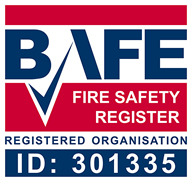Advising on and Installing Fire Extinguishers for Over 30 Years
There are an estimated 150,000 uncontrolled fires in UK buildings each year, many of which could be entirely preventable with proper care and respect for fire safety.
Choosing the right fire extinguishers for your building can prevent small fires from getting out of hand. For over 30 years, our BAFE qualified engineers have supported businesses in the selection, installation and maintenance of extinguishers, protecting thousands of buildings and lives in the process.
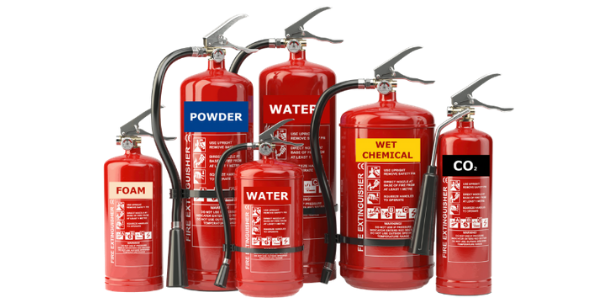
Understanding Fire Classes
In the UK, fires are divided into six different classes based on the severity of their risk - Class A, B, C, D, E and F.
Range of Fire Extinguishers
We offer a variety of fire extinguisher types, including: water, wet foam, dry powder, CO2 and wet chemical.
Commercial Extinguishers
Our expert technicians help businesses to comply with the latest UK extinguisher laws and regulations.
Extinguishers for Education
Keeping students safe with fully BAFE compliant fire extinguisher maintenance, installations and servicing.
Understanding Fire Classes
When dealing with any type of fire the main priority, once everybody is safe, is to act accordingly based on the type of fire you are dealing with. There isn’t one prescribed way to put out every fire. As an example, if you were to throw water over an oil fire this would worsen the flames and cause the fire to spread faster. Property owners should assess the risk their building poses before settling on an extinguisher.
IMPORTANT: You should only consider using a fire extinguisher once everybody has been alerted to the fire and the fire brigade have been called. You should also ensure you are safe from smoke and that the fire is not between you and your only escape route.
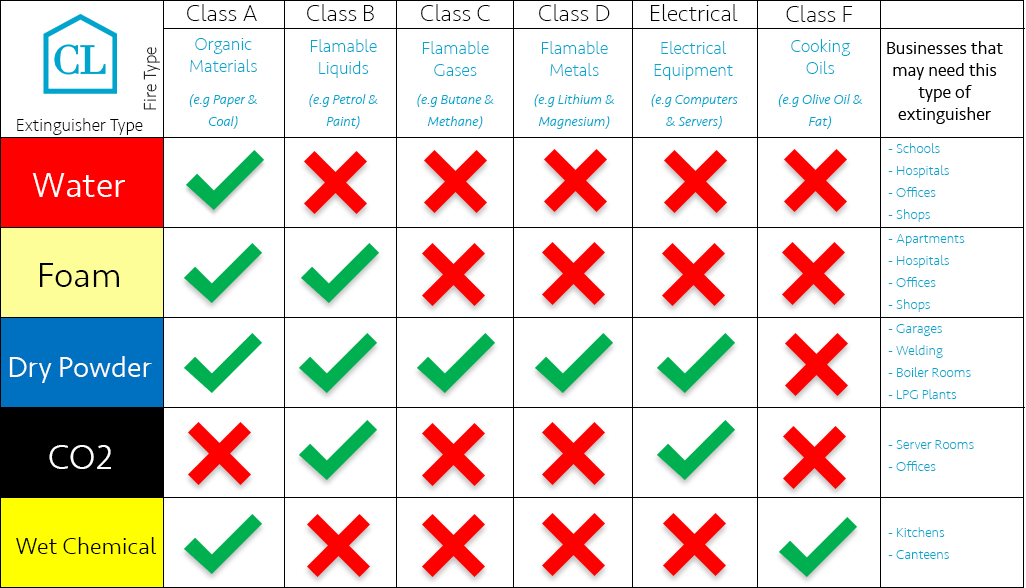
Water extinguishers should only be used for Class A fires which involve organic materials such as wood, paper, coal, and cardboard. It’s a legal requirement for most commercial buildings to have a Class A extinguisher, but a foam extinguisher is often preferred due to its ability to also deal with Class B fires.
You would consider using a water extinguisher over a foam extinguisher because it creates less mess and can also cover a larger surface area than most alternatives.
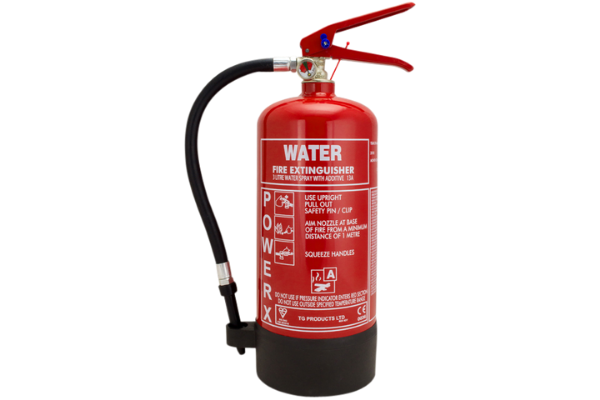
Foam extinguishers are suitable for responding to Class A and Class B fires which involve organic materials and flammable liquids. As it’s a legal requirement for all commercial buildings to have Class A fire extinguishers on every floor, the foam extinguisher is the most commonly used.
Unlike water extinguishers, foam extinguishers provide additional coverage as they can also deal with Class B fires.
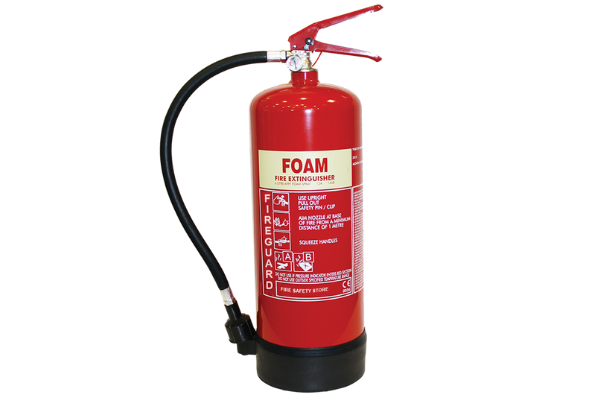
Named the 'ABC extinguisher' after the fire classes it can be deployed on, these extinguishers come with the added benefit of being able to be used on a wide range of fire types, including A, B, C, D and E fires. Dry powder is suitable for use on electronics and flammable metals. Despite their wide application, the primary reason these extinguishers are not used is because it can be difficult to clear up the leftover residue once the fire is out, especially in confined spaces.
This type of extinguisher is only suitable for electrical fires under 1000v (a plug socket is 120v as a benchmark) and in the case of some metals such as magnesium and titanium you will require specialist dry powder extinguishers.
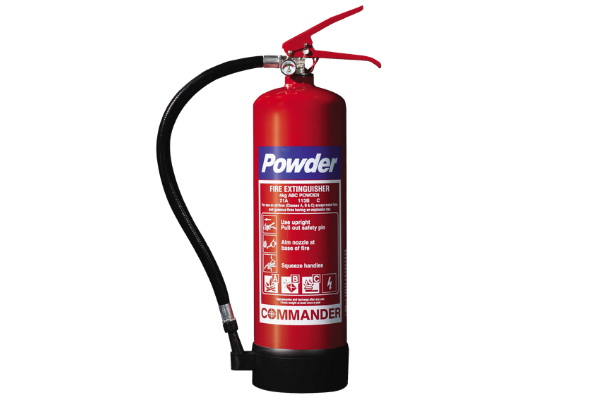
Designed for use on Class F fires (cooking oils and fats) this extinguisher can also be applied to Class A fires, but water or foam extinguishers are more commonly used here. This type of extinguisher is a legal requirement in commercial kitchens and should be paired inside this environment alongside a fire blanket. This is the only type of extinguisher you should use on Class F fires.
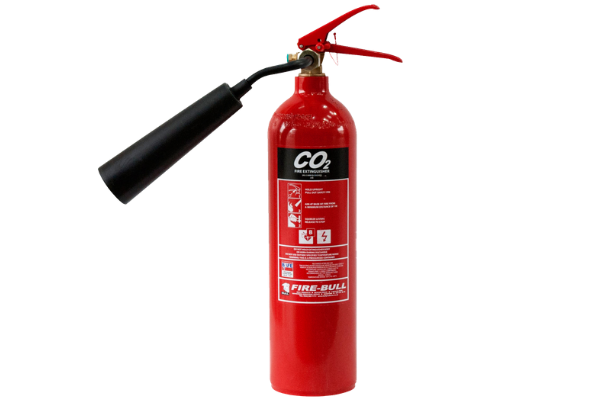
Wet chemical extinguishers are mainly used for Class E fires (electrical) as the CO2 suffocates the fire by displacing the oxygen it requires to continue burning. These are a legal requirement in all commercial environments where electronics are used. The size of the extinguisher required depends on the voltage of equipment you use. These extinguishers can also be applied to Class B fires.
Wet chemical extinguishers can often be found in server rooms, but in most cases, we would suggest a full suppression system inside server rooms to protect valuable data which may be irreplaceable.
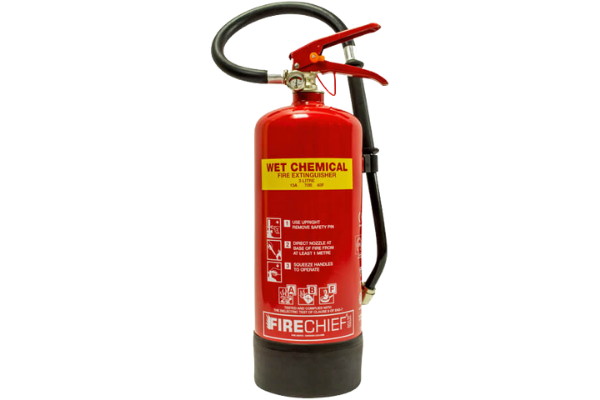
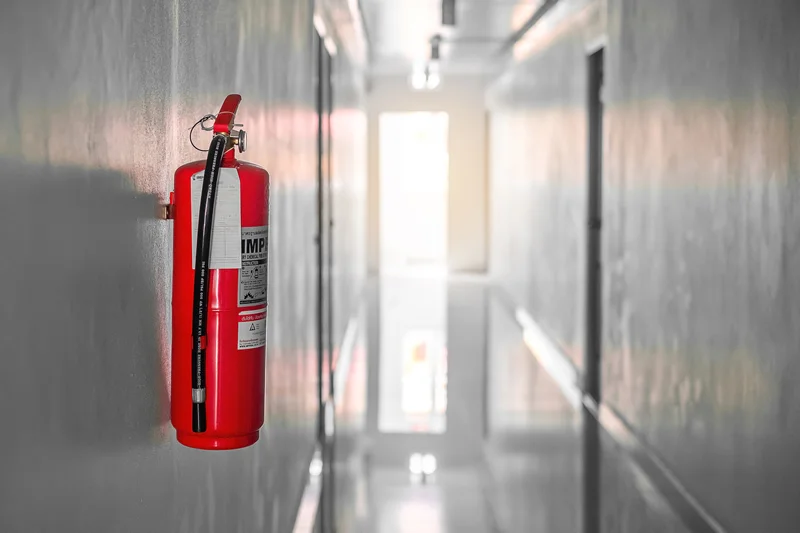
Commercial Fire Extinguishers
It’s a legal requirement that all commercial premises have a minimum of two class A fire extinguishers on every floor of the building unless it is a very small premises, in which case one may be acceptable. It’s also a legal requirement that they have at least two, 2kg CO2 extinguishers on every floor, and these have to be 5kg extinguishers if there is any 415-Volt rated equipment.
As commercial buildings get bigger, their requirements get more complex. At Chris Lewis, we’re here to advise you on your legal responsibilities, helping you to determine the most appropriate extinguishers for your business.
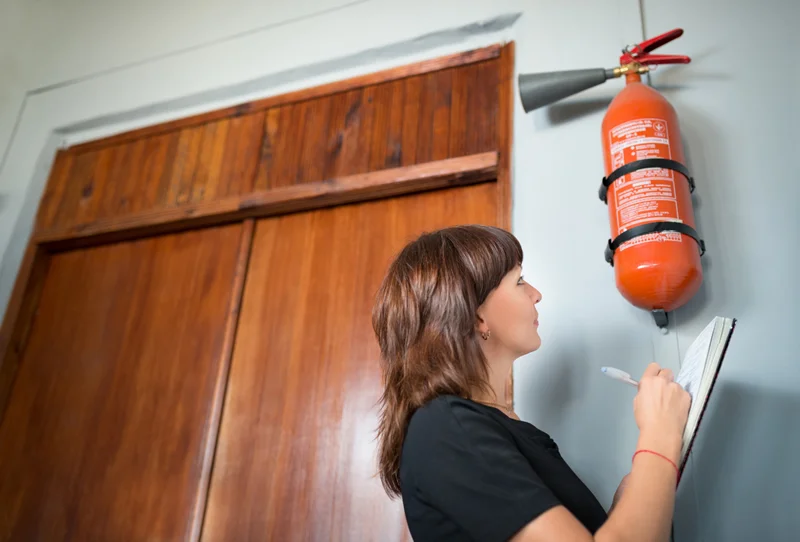
University, College & School Fire Extinguishers
In educational facilities, one of the first things you must do is undertake a risk assessment. This will involve assessing your premises and discovering what safety measures you need to take and where extinguishers are needed. As a general rule in schools, colleges and universities, there should be one Class A fire extinguisher available every 200m2, with at least two of these per floor.
Naturally, every building will present its own unique risks, and the specification process can quickly become complex. As BAFE registered school fire extinguisher specialists, we can help you keep it simple. We’re here to support you with specification and installation from start to finish.
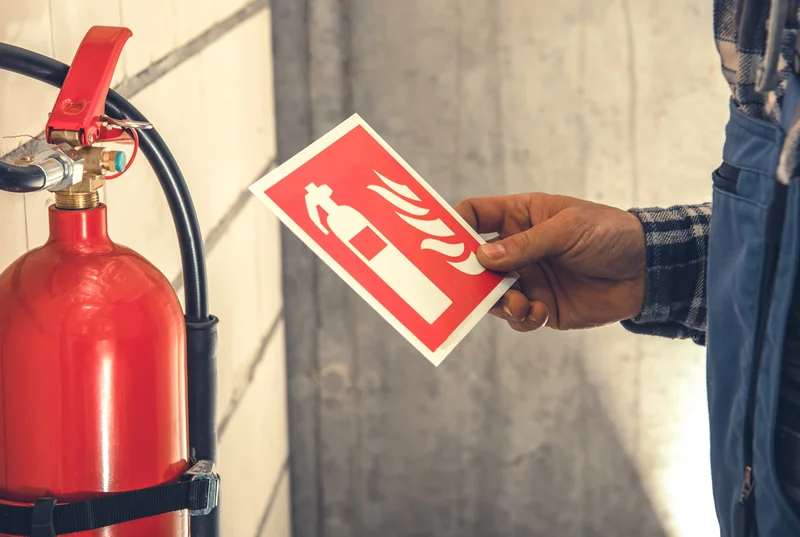
Fire Extinguisher Commissioning & Servicing
Building owners need to have their fire extinguishers commissioned on-site by a competent person to the BS 5360-3 standard before you can certify that you have fulfilled your responsibility in accordance with your commercial fire risk assessment. This commissioning even applies to brand new extinguishers as they could have been damaged, discharged, or suffer pressure loss during delivery.
After the initial commissioning, in accordance with the BS 5036-6 regulation, you must visually inspect your extinguishers monthly to ensure they're in good condition. You must also have them undergo annual maintenance, and then an advanced service every five years. Note: CO2 extinguishers are higher pressure and so require different servicing, with an extended service required every 10 years.
What can Chris Lewis do for you?
At Chris Lewis Group, we recognise that every building is different. It can be confusing to know where to start with fire safety in your school, college, or university. Our expert technicians are here to help. We can advise you on the best fire extinguisher solution for your organisation, and your legal responsibilities moving forward.
Plus, with our extensive maintenance packages, including annual inspections, we can ensure your school remains safe and compliant both now and long into the future. Already have fire extinguishers not currently provided by us? No problem. We can service and commission fire safety equipment regardless of the original provider.
Looking to connect with one of our experts on your requirements?
Submit the below form and we will get back to you shortly to discuss your fire extinguisher requirements.
Fire Extinguisher Installation FAQs
What types of fire extinguishers do you supply?
We supply a comprehensive range of fire extinguishers, including water, foam, dry powder, CO2, and wet chemical extinguishers. Our team can advise you on the best types for your specific needs.
Do you offer fire extinguisher installation services?
Yes, we provide professional installation services to ensure your fire extinguishers are correctly placed and compliant with safety regulations. We’ll assess your premises to determine optimal locations.
How often should fire extinguishers be inspected and serviced?
Fire extinguishers should be inspected monthly and serviced annually by a qualified technician to ensure they are fully operational and compliant with British Standards.
Are your fire extinguishers compliant with current regulations?
Yes, all our fire extinguishers meet UK and European safety standards. We ensure that our products are regularly tested and certified to provide you with reliable fire protection.
What should I do if my fire extinguisher has been used?
If your fire extinguisher has been used, it should be serviced or replaced immediately. Contact us, and we’ll arrange for a technician to assess and recharge or replace it as needed.
How do I know which type of fire extinguisher I need?
The type of fire extinguisher you need depends on the potential fire risks in your environment. Our team can conduct a risk assessment to recommend the most suitable extinguishers for your premises.


